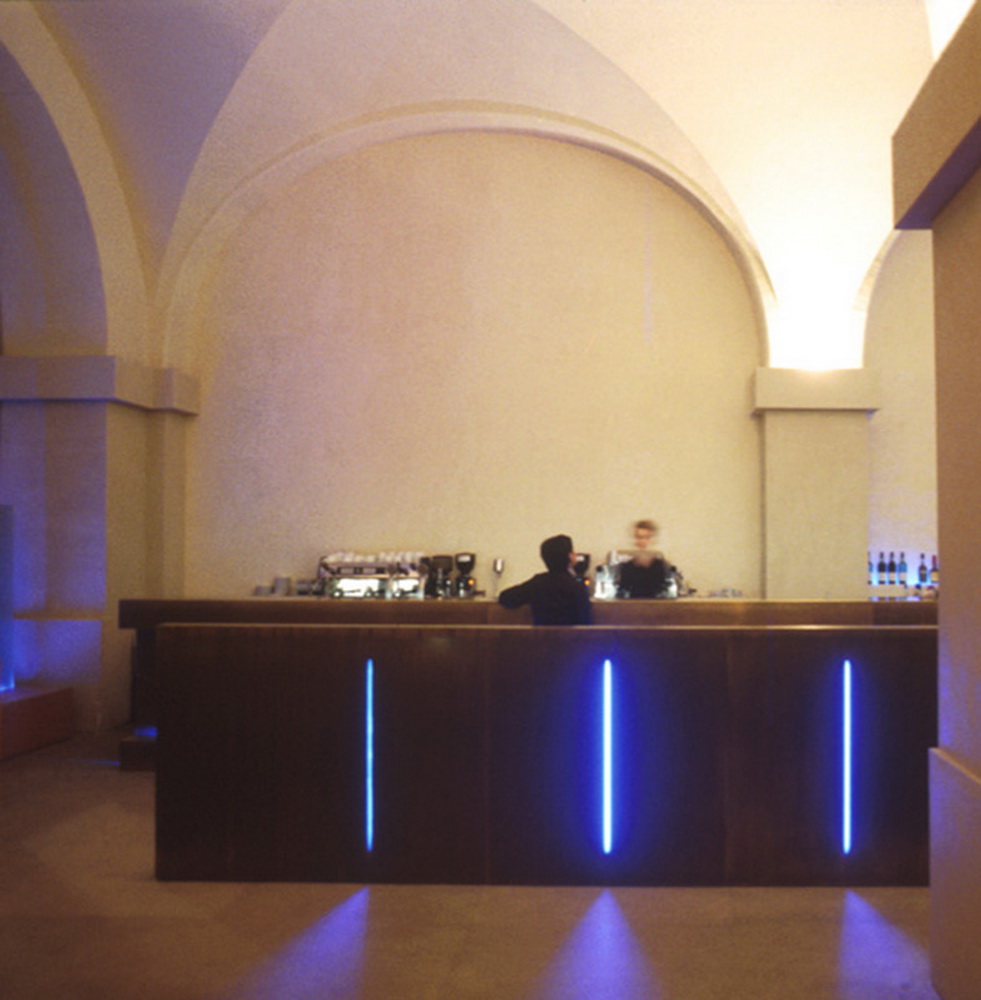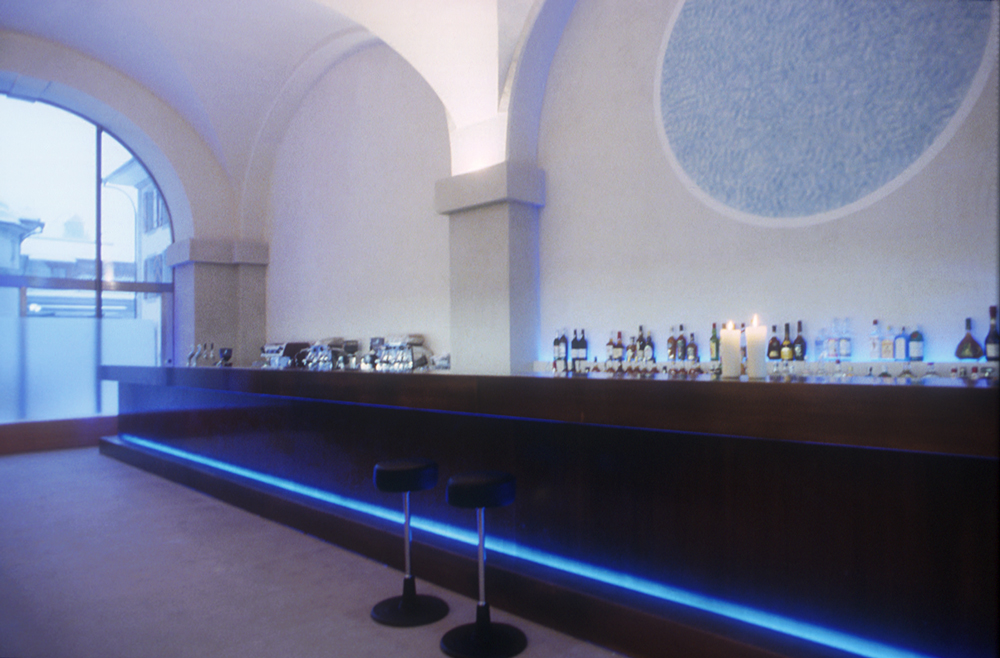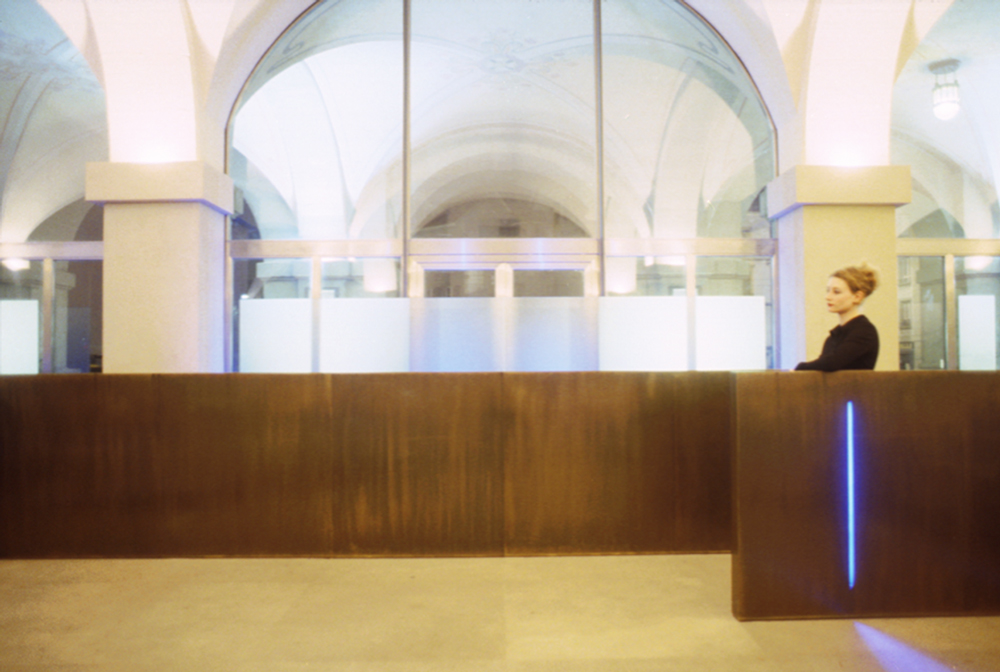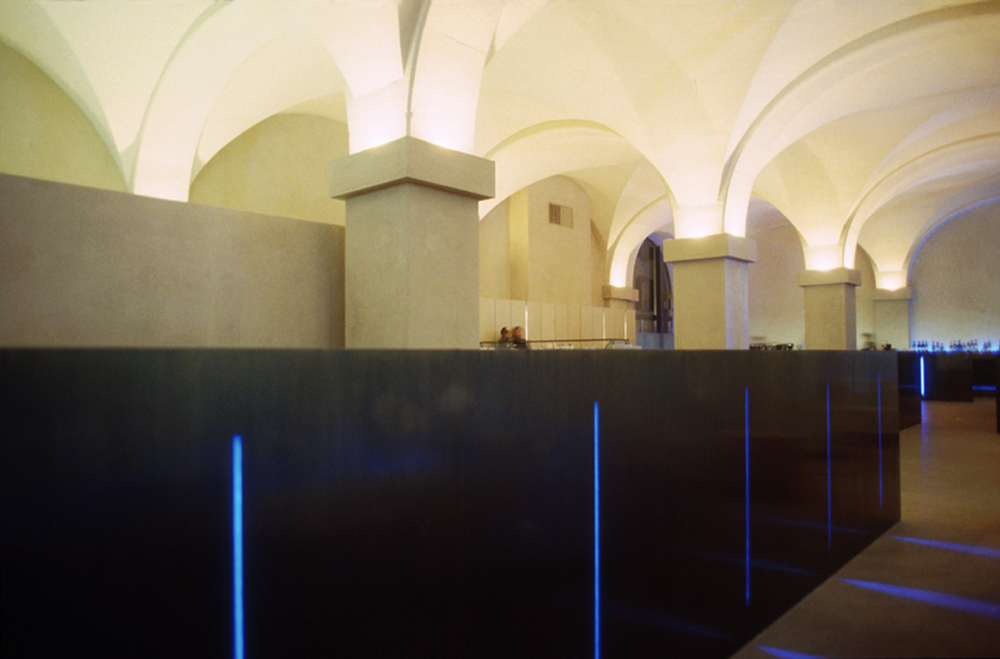Kornhaus Cafè
Bern, 1998
The café is located on the ground floor of the Kornhaus, a large 17th-century building originally used for food storage.
The original space and structure – the vaulted ceiling and stone columns – have been restored and preserved.
The sandy colour of the new stone floor has been matched on the walls and ceiling with pigmented plaster and limewash.
The space, 300m², has been ordered according to different zones, with a decisive installation of stretched dwarf walls in oxidised brass which also give a clear sense of direction and location.
The expansive satin-glass wall, originally intended to run along the perimeter, would have evoked an intense feeling of privacy and interiority; but this feature was rejected by the building architects and town planners, who thus impeded the intended atmosphere.
Kornhaus Cafè
Bern, 1998
The café is located on the ground floor of the Kornhaus, a large 17th-century building originally used for food storage.
The original space and structure – the vaulted ceiling and stone columns – have been restored and preserved.
The sandy colour of the new stone floor has been matched on the walls and ceiling with pigmented plaster and limewash.
The space, 300m², has been ordered according to different zones, with a decisive installation of stretched dwarf walls in oxidised brass which also give a clear sense of direction and location.
The expansive satin-glass wall, originally intended to run along the perimeter, would have evoked an intense feeling of privacy and interiority; but this feature was rejected by the building architects and town planners, who thus impeded the intended atmosphere.
Kornhaus Cafè
Bern, 1998
The café is located on the ground floor of the Kornhaus, a large 17th-century building originally used for food storage.
The original space and structure – the vaulted ceiling and stone columns – have been restored and preserved.
The sandy colour of the new stone floor has been matched on the walls and ceiling with pigmented plaster and limewash.
The space, 300m², has been ordered according to different zones, with a decisive installation of stretched dwarf walls in oxidised brass which also give a clear sense of direction and location.
The expansive satin-glass wall, originally intended to run along the perimeter, would have evoked an intense feeling of privacy and interiority; but this feature was rejected by the building architects and town planners, who thus impeded the intended atmosphere.



